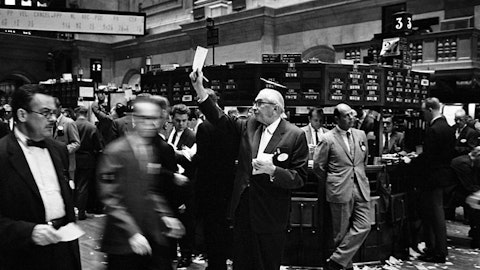Jim MacCallum: Thank you, Seif. As you mentioned, we generated $10.4 million of revenue for the quarter, a decrease of 17% from Q2 resulting from economic curtailment. However, the power credits that we generated from the curtailment reduced our net power costs significantly and increased our mining profit to $6.1 million. Our mining margin percentage was 58% for Q3, an increase over the 36% mining margin we achieved in Q2. During the quarter, we recorded a onetime noncash provision of $1.2 million related to prior year sales tax expected to be received from the Canadian tax authorities. This is the majority of the $1.5 million of nonrecurring expenses that we added back to adjusted EBITDA. We generated adjusted EBITDA of $3.1 million, which is a strong improvement from the second quarter.
For the nine-month period ended September 30, we generated $5.3 million of adjusted EBITDA. At the end of the quarter, we had $8 million of cash on hand. As Seif mentioned, we’ve seen a significant increase in hash price in October and so far into November. With our total hashrate capacity, every $10 increase in hash price results in approximately $2.5 million of incremental revenue per quarter, which dramatically improves our profitability and cash flow. This slide shows our cash flow from the end of June to the end of September. Our cash flow from operations, excluding working capital changes, was $1.5 million. As Seif mentioned, we raised $7.5 million in gross proceeds from the sale of equity, and we paid down $7.8 million in principal and interest on our debt.
At the end of the quarter, we had a net power receivable of $2.8 million. Adding that to the $8 million closing cash balance would have given us $10.8 million at September 30 compared to $9.1 million at June 30. We are pleased that we continue to improve our operating cash flow with our focus on operations and cost reduction. As we’ve shown in prior quarters, we continue to scrutinize all of our non-mining operating expenses and find ways to reduce costs. In Q3, we reduced our recurring non-mining operating expenses by 11% as compared to Q2. Since the second half of 2022, we’ve cut our non-mining operating expenses by more than 70%. This cost reduction is important because it improves our overall margin and cash flow generation. Again, one of our key priorities is to reduce debt, which is critically important as we approach the halving.
In Q3, we reduced our debt owed to Galaxy by $5 million to $27 million, and we ended the quarter with $70 million in debt. We are also in advanced discussions to sell certain noncore assets, which is an important part of our deleveraging strategy. We anticipate announcing further details by the end of the year. With that, I’ll pass it back to Seif.
Seif El-Bakly: Thanks, Jim. In Quebec, we’ve now completed the deployment of our ePIC BlockMiners numbering around 2,700. This represents around 300 petahash of additional capacity, bringing our total hashrate capacity to 2.8 exahash as per second. We’re seeing really good performance from these machines, and we’re excited to have added them to our fleet just in time to take advantage of the recent run-up in hash price. So all in all and in summary, it was a great quarter for Argo. We increased our mining margin, our adjusted EBITDA and our total hashrate capacity, all the while continuing to cut costs and reduce debt. I’m also really optimistic about the trends that we’ve been seeing in the market with the increases in both Bitcoin and hash price. Argo is well positioned to capitalize on these trends as we move forward into 2024. With that, back to you, Paul and Tom, for any questions. Thanks, everybody.
Operator: [Operator Instructions] I’d like to remind you, a recording of the presentation along with the copy of the slides and the published Q&A can be accessed via your Investor dashboard. As you can see, we’ve had a number of questions submitted both throughout today’s presentation and pre-submitted. Tom, if I may just hand back to you just to read out those questions where appropriate to do so, and I’ll pick up from you at the end.
Tom Divine: Great. Thanks, Paul. Our first question comes from Bill Papanastasiou at Stifel. Hash price has been rebounding lately with the recent appreciation in the Bitcoin spot price. Can you speak to the improvements in Q4 ’23 and elaborate on how it is impacting cash flow?
Seif El-Bakly: Yes, sure. I’ll take. Thanks, Tom. Thanks, Bill. Yes, the hash price is something that obviously we’re paying very close attention to. It’s come down a bit from its most recent peak at $90, but it’s still significantly higher than the Q3 average of $67. So I mentioned this during our remarks, but really, for every $10 increase in hash price, based on our total hash rate capacity of 2.8 exahash, we’re generating an additional $2.5 million per quarter. So we did just have a difficulty increase of around 3.5%. So that tempers a little bit with the hashrate, but it’s actually smaller than the difficulty adjustment we were actually expecting a year ago — a week ago, sorry, not a year ago.
Tom Divine: Our next question comes from Kevin Dede at H.C. Wainwright, and this is for Jim. Can you remind me how you reduced the debt by $5 million? Did that come from operating cash flow?




